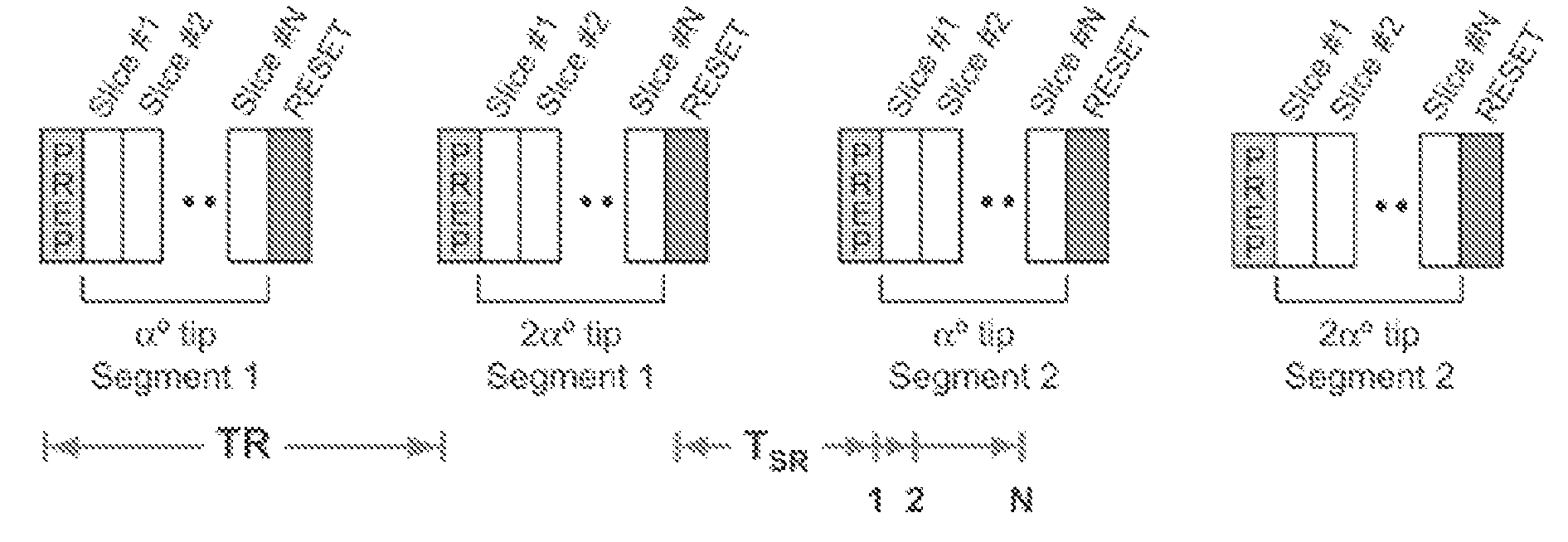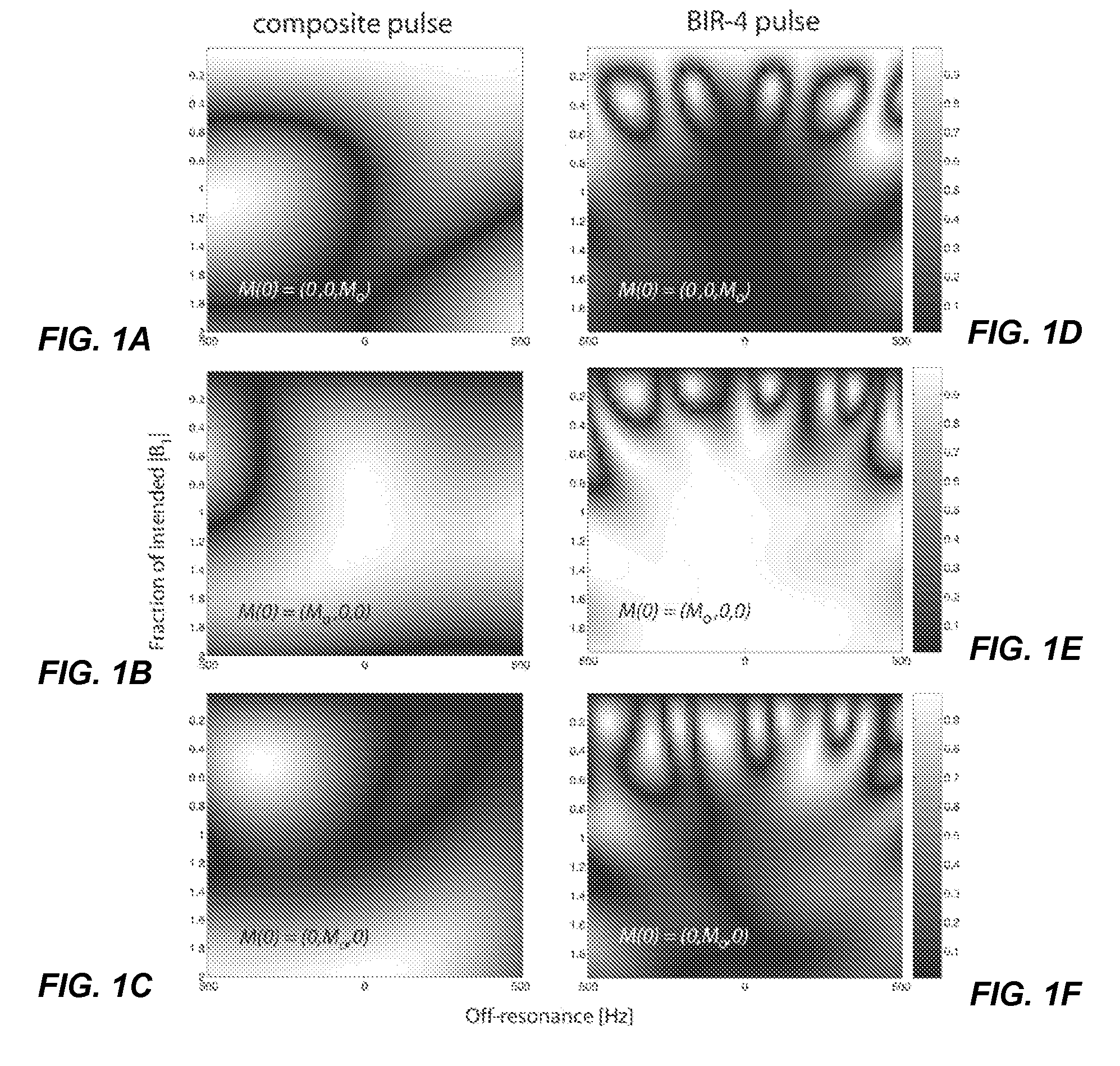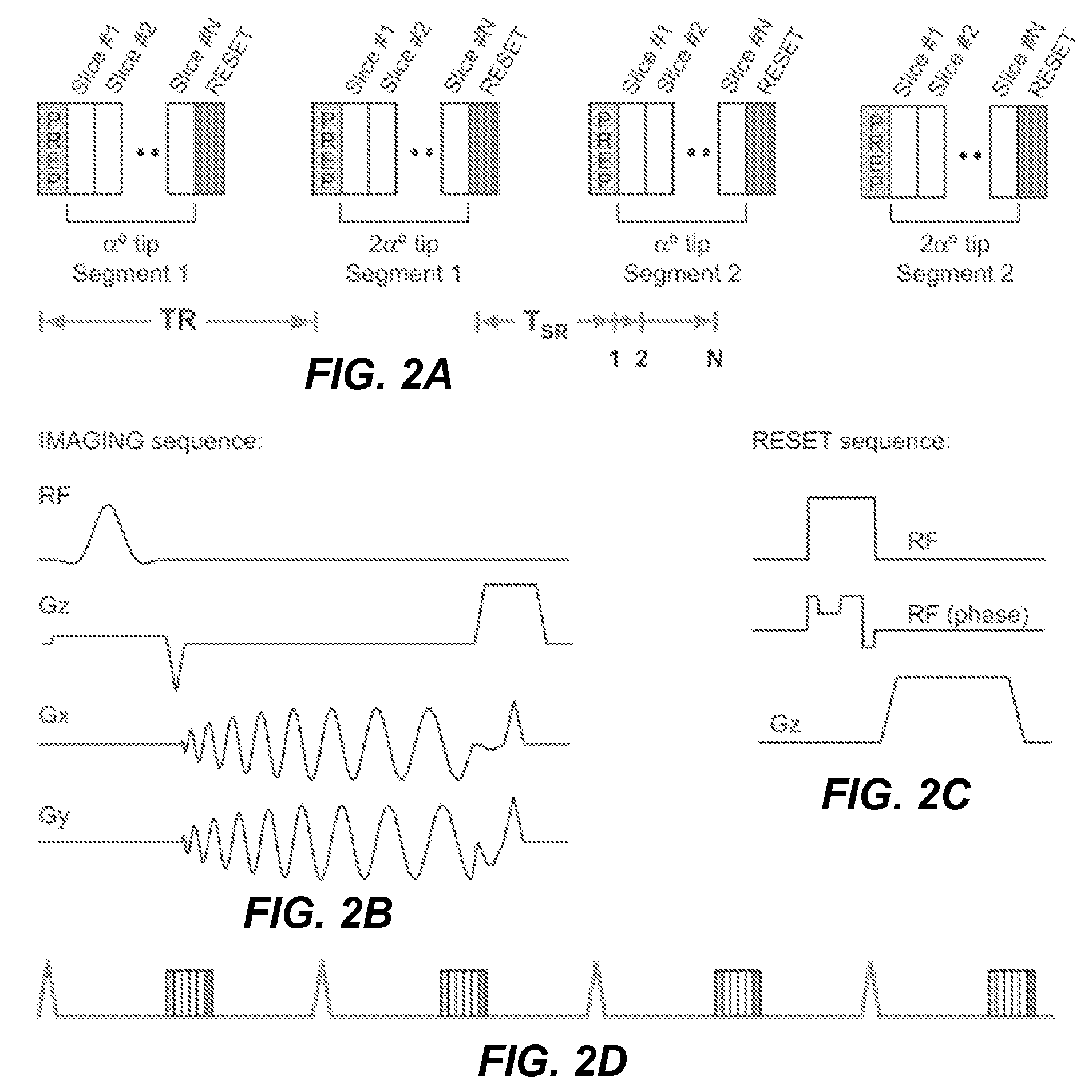RF field mapping for magnetic resonance imaging
a magnetic resonance imaging and rf field technology, applied in the field of magnetic resonance imaging, can solve the problems of inapplicability of methods, inability to apply, and limitations of previous double-angle approaches, and achieve the effect of lifting the dependence of tr on t1, rapid imaging and multi-slice acquisition of b1+ maps in a short tim
- Summary
- Abstract
- Description
- Claims
- Application Information
AI Technical Summary
Benefits of technology
Problems solved by technology
Method used
Image
Examples
Embodiment Construction
[0016]The proposed method uses an adaptation of the double angle method (DAM) described previously. Such methods allow calculation of a flip-angle map, which is an indirect measure of the B1+ field. Two images are acquired: I1 with prescribed tip angle α1 and I2 with prescribed tip angle α2=2α1. All other signal-affecting sequence parameters are kept constant. For each voxel, the ratio of magnitude images satisfies
[0017]I2(r)I1(r)=sinα2(r)f2(T1,TR)sinα1(r)f1(T1,TR),
where r represents spatial position and α1(r) and α2(r) are tip angles that vary with the spatially varying B1+ field. If the effects of T1 and T2 relaxation can be neglected, then the actual tip angles as a function of spatial position satisfy
[0018]α(r)=arccos(I2(r)|2I1(r)).
[0019]A long repetition time (TR≧5 T1) is typically used with the double-angle methods so that there is no T1 dependence in either I1 or I2 (i.e., f1(T1,TR)=f2(T1,TR)=1.0). Instead, the proposed method includes a magnetization-reset ...
PUM
 Login to View More
Login to View More Abstract
Description
Claims
Application Information
 Login to View More
Login to View More - R&D
- Intellectual Property
- Life Sciences
- Materials
- Tech Scout
- Unparalleled Data Quality
- Higher Quality Content
- 60% Fewer Hallucinations
Browse by: Latest US Patents, China's latest patents, Technical Efficacy Thesaurus, Application Domain, Technology Topic, Popular Technical Reports.
© 2025 PatSnap. All rights reserved.Legal|Privacy policy|Modern Slavery Act Transparency Statement|Sitemap|About US| Contact US: help@patsnap.com



